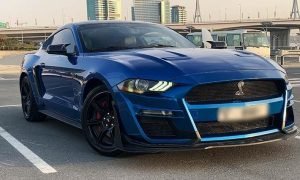
A Sports bike is a kind of motorbike that belongs within the performance-bike sector. The makers optimise the sports motorcycles for acceleration (pick-up), speed, braking, and cornering ability. However, these performance features come at the sacrifice of comfort and fuel efficiency compared to comparable bikes. So, most of the Sports bikes in India have various sizes and pricing than other bikes.
The Super Sports motorcycles, according to Soichiro Honda, Honda’s founder, are mainly designed to provide “speed and exhilaration.” Many people, however, think that the fun of a sports bike derives mostly from its ability to operate on paved roads. Sports bikes include qualities like cornering on paved roads and handling. They also provide adrenaline-pumping acceleration, powerful braking, and a world-record peak speed.
Sports motorcycles have always had small, rough seats. The riding posture on these bikes enables the feet to rest at the back while the hands bend at the elbows. As a result, the rider is forced to lean forward, as if sleeping on the bike. As a result, when riding a sports bike, the spine stays flexed forward. Because of the low centre of gravity and limited ground clearance, vehicles have incredible cornering abilities. As a result, sports bikes are designed to be used for short distances at high speeds, such as during racing events.
The sports bike also has low and thin handlebars, which make for an unpleasant riding position. It does not give the rider any comfort. The footpegs are located at the rear mono-shock or the exhaust. As a result, they’re quite near to the rider’s body. The rider must lean hard into the corner, practically touching his knees to the ground. As a result, the riding comfort suffers even more.
Riding a sports bike demands the greatest level of attention. As a result, a short distance and duration ride is perfect. With poor riding posture and fast speeds, the rider’s body and muscles, as well as his or her thoughts, are put under a lot of stress.
Long durations of riding at fast speeds, on the other hand, might result in tiredness and pain. The forearm muscles are strained while riding a bike with bent hands.
The majority of individuals utilise sports bikes for short-distance riding or in sporting events/racing. In a single day, the distance covered varies from 70 to 200 kilometres. They have a smooth, high-revving engine that allows them to sprint quicker than other sorts of motorcycles.
Sports bikes are divided into four categories based on their intended use: lightweight, middleweight, Supersports, and hyper sports bikes. These are further separated into sub-categories including such Naked, Dual-Sports, Sports Touring, and Adventure Sports. As a result, manufacturers provide varied engine capacity for these motorcycles depending on their use.
As a result, several entry-level Sports bikes have engine displacements of 300-500cc and power outputs of less than 50bhp. Mid-level Sports bikes, on the other hand, have engines ranging from 500 to 750cc, which provide greater power. Some high-end motorcycles have engines ranging from 750cc to 1000cc.
Manufacturers, on the other hand, provide additional options based on local rules and market demand. One of these high-end Hyper Sports motorcycles, such as the Kawasaki Ninja H2, has a 310bhp power output. It just set a new world speed record of 400 kilometres per hour.
Sports bikes are often sleek, with a complicated design and a plethora of high-end amenities. They also feature a low centre of gravity, which makes them easier to manage and handle. They are less comfortable, have lower mileage, and have a higher maintenance expense. Their primary concerns are cornering ability, pick-up, and max speed.
To save weight and enhance handling, these motorcycles employ lightweight materials like cast aluminium. Dual exhaust pipes on a handful of these motorcycles provide a loud, rumbling exhaust sound. Premium options such as the Motorcycle TCS, ABS, bigger tyres, high-performance front and rear suspension, and alloy wheels are also available to boost performance.
A sturdier trellis frame, slipper clutch, soft-compound tyres, and a mono-shock rear suspension for better agility and dynamic responsiveness are among the other safety features. For effective braking, several new Sports motorcycles have dual, semi-floating 330 mm discs with four-piston callipers. Special features such as a quick-shifter, bank-angle sensor, and super-charger are available from some manufacturers. This enhances the bike’s performance as well as the rider’s comfort. However, some of these motorcycles have a fuel efficiency of about 15-20 kilometres per litre. They also have a lot of pricey spare parts and a lot of upkeep. As a result, if and when they break down, they may face a slew of problems.
These motorcycles often feature more power and torque, trendy colours, and a sleek design/style. Sportsbikes are favoured because of their great performance and ability to set new speed records. As a result, in industrialised nations such as the United States, Canada, Europe, and Australia, sports bikes are increasingly popular. Kawasaki, Yamaha, Honda, Ducati, Aprilia, and KTM are some of the most well-known luxury sports bike brands.
However, emerging countries have a plethora of entry-level sports bike manufacturers. Bajaj, Hero, and TVS Motors are a few of them. In India, prominent sports bikes include the Bajaj Pulsar, Hero Karizma ZMR, and TVS Apache RTR.
In a nutshell, Sports bikes are capable of covering short distances with ease. They provide excellent performance, cornering, and handling. These motorcycles are a lot of fun to ride on winding roads and bends because of their strong cornering abilities. Furthermore, they are ideal for racetracks, paved roads, and tarmac. Some premium Sports bikes have improved suspension, safety, and other features that are more suitable for everyday use. These bikes, however, are too pricey. As a result, the swankier and more feature-laden the sports bike becomes, the higher the price tag.
However, because of the confined seating posture, they are not suitable for long-distance travel. As a result, the majority of individuals utilise them for short-distance highway commuting or racing events.






